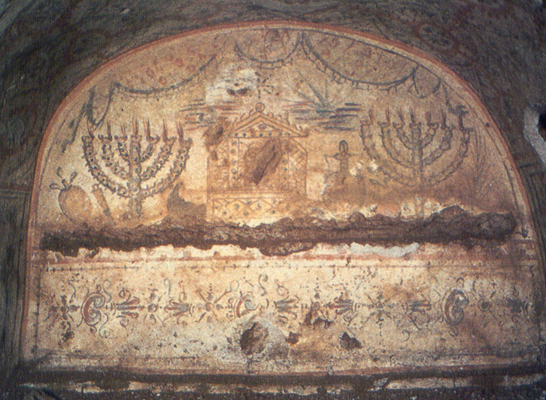Mantegna’s “Parnassus” is a Renaissance painting commissioned by Isabella d’Este around 1495-97. It depicts the love affair between Mars and Venus. In the painting they are central and far above everyone else, the obvious focal point of the piece. Overall, the image is very naturalistic. The single point perspective creates a depth of field and illusion of three dimensions that is characteristic of Renaissance art and a major departure from the flattened, almost formulaic images of the Gothic and Romanesque periods.

In the image itself we see Mars and Venus together, obviously as lovers (judging by their shared look, the intertwining of their arms, and the bed behind them). Flanking them to their right is Cupid, who’s arrows are said to have the power to make anyone fall in love. While it may be insignificant, it’s worth nothing that Venus is actually holding an arrow (in the same hand as the arm that is wrapped up with Mars) which even looks like it is embedded in her leg from where the viewer is standing. This may be nothing, or it may be indicative of Cupid’s influence. The tiny cherub himself is seen turned back to the side, gesturing in an almost threatening manner at Venus’ jilted husband, Vulcan, who stand naked and aggrieved by his forge. Vulcan’s appearance at the side of the painting helps to tie Venus, Mars, and Cupid in with the scene depicted below them.
Vulcan is the god of the forge, fire, and volcanoes. In the center of the bottom half of the scene are the nine muses, dancing and singing together. It was believed by the ancient Greeks that the singing of the muses would cause great calamities, such as floods, earthquake, or volcanic eruptions. This ties in nicely with an agitated Vulcan.
But on the right, in the foreground, the two nearest figures are Mercury and Pegasus. Mercury was known to be one of the protectors of the lovers Mars and Venus, and it was believed that the calamities brought on by the Muses’ singing could be stopped only by the stomping of Pegasus’ hoof. Note Pegasus’ raised leg, and the way that Mercury leans against him. Then shift your view back up to the top of the painting. On the left, Vulcan’s side, there are jagged, jutting cliffs and precipices and a darkened sky. To the right, Mercury’s side, are softer hills with water and vegetation and a clear sky. What’s truly interesting about this painting in particular and Renaissance art in general is the myriad layers of interpretation that can be applied, and the fact that these numerous, varying explanations and stories behind the art were often all done intentionally and interwoven to create that much deeper of a narrative and meaning.







